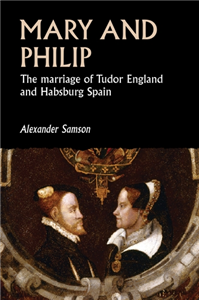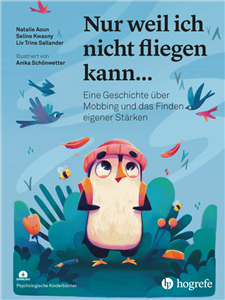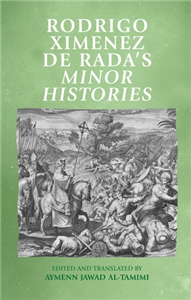Band 3: Ludwig Wittgenstein und der Wiener Kreis
I Mittwoch, 18. Dezember 1929 (bei Schlick): (Der Beweis in der Mathematik) / Was bedeutet das Suchen in der Mathematik? (Beispiel: Dreiteilung des Winkels / Gleichnis: Lösung eines Knotens) / Geometrie als Syntax I / Widerspruchsfreiheit I
Sonntag, 22. Dezember 1929 (bei Schlick): {»Alle«I}(Gegenstände / Was bedeutet »alle«?) / Solipsismus (Der Sinn des Satzes ist seine Verifikation Leerlaufende Räder / {»Ich kann nicht Ihren Schmerz fühlen«} / {Sprache und Welt})
Mittwoch, 25. Dezember 1929 (bei Schlick): »Alle« II / Zeit (Extern – intern) / Gesichtsraum (Nachtrag, 30. Dezember 1929) / Geometrie als Syntax II / Physik und Phänomenologie / Farbensystem (Liegt jeder Satz in einem System? I / {Die Welt ist rot I} / Nachtrag, Montag, 30. Dezember 1929) / Anti-Husserl
Montag, 30. Dezember 1929 (bei Schlick): Zu Heidegger / Dedekindsche Definition / Reelle Zahlen I Donnerstag, 2. Januar 1930 (bei Schlick): {Elementarsätze} / {»Die heutige Erkenntnislage in der Mathematik«} (Freiwerdende Wahl folge / {Verschiedenes} Sonntag, 5. Januar 1930 (bei Schlick): Positive und negative Sätze / Die Farbe Blau in der Erinnerung / »Die Welt ist rot« II / Liegt jeder Satz in einem System? II / Schluß / Vortrag über Ethik / Wahrscheinlichkeit I (Würfe)
II 22. März 1930 (bei Schlick): {Verifikation und das unmittelbar Gegebene} ({Verifikation und Zeit}) / Wahrscheinlichkeit II / Hypothesen I (Doppelte Bedeutung der Geometrie / {Verschiedenes über Hypothesen}
III 19. Juni 1930 (bei Schlick): {Was in Königsberg zu sagen wäre}(Formalismus / Gleichung und Tautologie l)
25. September 1930 {Verschiedenes} / Variable / Beweis / Reelle Zahlen II / Idealisierung / Interpretation
IV Mittwoch, 17. Dezember 1930 (Neuwaldegg): Über Schlicks Ethik / Wert / Religion / Soll / Widerspruchsfreiheit II
Freitag, 26. Dezember 1930 (bei Schlick): Stil des Denkens Sonntag, 28. Dezember 1930 (bei Schlick): Widerspruchsfreiheit III (Die Entdeckung Sheffers / {Spielregeln und Konfigurationen des Spiels} / Was heißt es, einen Kalkül anwenden? / {Unabhängigkeit I}
Dienstag, 30. Dezember 1930 (bei Schlick): {Widerspruchsfreiheit IV} ({Frege und Wittgenstein I}/ Hilberts Beweis)
Donnerstag, 1. Januar 1931 (bei Schlick): Amerika / Das College-Wesen / { Widerspruchsfreiheit V} (Unabhängigkeit II / Zusammenfassung / Hilberts Axiome. I,I und I,2 / {Kalkül und Prosa } / Frege und Wittgenstein II)
Sonntag, 4. Januar 1931 (bei Schlick): {Gleichung und Ersetzungsregel I } ({Gleichung und Tautologie II}) / { Verifikation der Sätze der Physik} (Hypothesen II / Geometrie als Syntax III) / Nachträge (Schach / Zu Königsberg / Definition der Zahl)
V Montag, 21. September ( Argentinierstraße, dann {auf der} der Straße): Intention, Meinen, Bedeuten / {Kalkül und Anwendung} / {Das Nachschauen in einem Kalender} / Der Bau eines Dampfkessels / Existenzbeweis / {Widerspruchsfreiheit VI} (Versteckter Widerspruch) / Widerspruch (Gleichung und Ersetzungsregel II / Indirekter Beweis I)
VI Mittwoch, 9. Dezember 1931 (Neuwaldegg): Über Dogmatismus / Über das Unendliche / Über Ramseys Definition der Identität / Widerspruchsfreiheit VII / Einfügung aus dem Diktat (Widerspruchsfreiheit VIII / Gleichnis: Die »Extension« von p / (Der Begriff des Kalküls) / (Der Beweis in der Geometrie und in der Arithmetik)) / Zweiteilung des Winkels / Die Allgemeinheit in der Geometrie / Indirekter Beweis II
VII 1. Juli 1932 (Argentinierstraße): Hypothesen III
Anhang A
Gesamtheit und System / Gleichung und Tautologie / Begriff und Form / Was ist eine Zahl? / Sinn und Bedeutung / Über das Unendliche (Dedekinds Definition)
Anhang B
Thesen von Friedrich Waismann (um 1930): 1. Sachverhalt, Tatsache, Wirklichkeit / 2. Sprache / 3. Syntax / 4. Symmetrie, Asymmetrie / 5. Identität / 6. Verifikation / 7. Definition / 8. Gegenstand / 9. Der logische Raum




























